This fly is the latest development in my experiments with the melt glue I have used with some success for cod. This version is much smaller than the original and uses a simpler and better method for building the body. This not only makes the fly faster to make, but also much easier to cast.

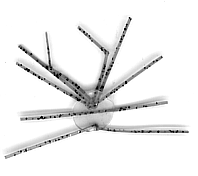
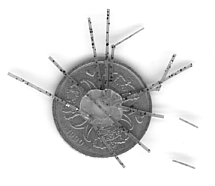

This fly is the latest development in my experiments with the melt glue I have used with good success for cod. This version is much smaller than the original and uses a simpler and better method for building the body. This not only makes the fly faster to make, but also much easier to cast.
| Hook | Short shank, straight eye, stainless |
| Body | Clear melt glue. These days you can consider using a light curing resin (LCR) in stead of the melt glue. |
| Legs | Red or orange rubber band (rubber legs or Silli Legs) |
| Eyes | Bead chain eyes |
- Make up legs and claws by cutting five 1" pieces of rubber
- Tie knots in the center of two of the five pieces so that they form an open V
- Cut two of the remeaining pieces into two
- Tie a knot on two of those smaller pieces
- Order the pieces of rubber band on a piece of baking paper
- Glue them together with a small drop of glue over the center
- While the glue is still hot press it flat with a small piece of baking paper
- Let cool
- Remove baking paper and turn over the crab
- Place the crab on a large coin - a Danish five crown coin (a 'Femmer') is suitable. It's about one inch across.
- Trim legs after coin and then trim claws
- Varnish the glue red
- Place hook in a small drop of glue and let cool
- Place eyes over hook in a small drop of glue at the hook bend and let cool
- Cover a bit of the eyes and the leg pad with glue to form a body
- Let cool
- Fish!
- Log in to post comments

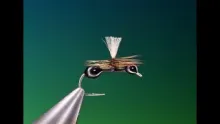
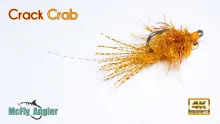
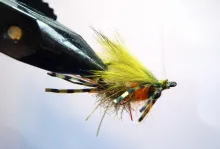
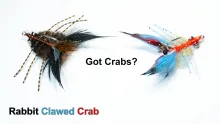
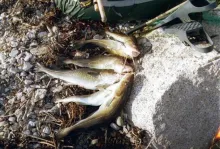
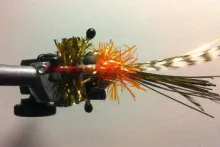

Roger,
On the the
Roger,
On the the later models I started using a short hook and gluing a bit out over the hook bend to avoid the rotating hook syndrome. Your idea with the tying thread is great, and should work fine. Another option might be to use a small file and roughen the hook shank a bit. This will probably improve the grip of the glue.
Thanks for the tip, and let us know how you do.
Martin
Hi
This is without
Hi
This is without doubt a great idea and a good fly. I have experimented with a number and can get a huge variety of sizes and colours incredibly easily.
However, I find that the hook can rotate after a few casts as it is only glued to the crab. I find that if the hook has a bed of thread, coarsely wound in a cris-cross pattern along its shank then it holds far more firmly. Also I tie the legs to the hook shank giving a few more bulges and lumps for the glue to bond to.
Going to try it out for snub nosed dart (permit) and bonefish at Lord Howe island (off the Aussie coast) in February. May not be just a cod fly and a darn site easier to make than a merkin with all those figure 8 bindings. Let you know how it goes when I return
Kind regards
Roger